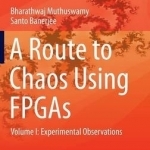A Route to Chaos Using FPGAs: Volume I: Experimental Observations
BookThis item doesn’t have any media yet
2015 | Reference
The purpose of this introductory book is to couple the teaching of chaotic circuit and systems theory with the use of field programmable gate arrays (FPGAs). As such, it differs from other texts on chaos: first, it puts emphasis on combining theoretical methods, simulation tools and physical realizations to help the reader gain first an intuitive understanding of the properties of chaotic systems. Second, the "medium" used for the physical realizations is the FPGA. These devices are massively parallel architectures that can be configured to realize a variety of logic functions. Hence, FPGAs can be configured to execute systems of differential equations in parallel. Nevertheless maximizing the capabilities of an FPGA requires the user to understand the underlying hard- and software to simulate the relevant differential equations. This is achieved by the third distinctive feature in this book: a lab component in each chapter. Here, students are asked to investigate chaotic systems via computer simulation and realize the system on an FPGA. This text is intended for all graduate students in science and engineering interested in exploring the various routes to chaos.
Related Items:
| Published by | Springer International Publishing AG |
| Edition | Unknown |
| ISBN | 9783319181042 |
| Language | N/A |
Images And Data Courtesy Of: Springer International Publishing AG.
This content (including text, images, videos and other media) is published and used in accordance
with Fair Use.
